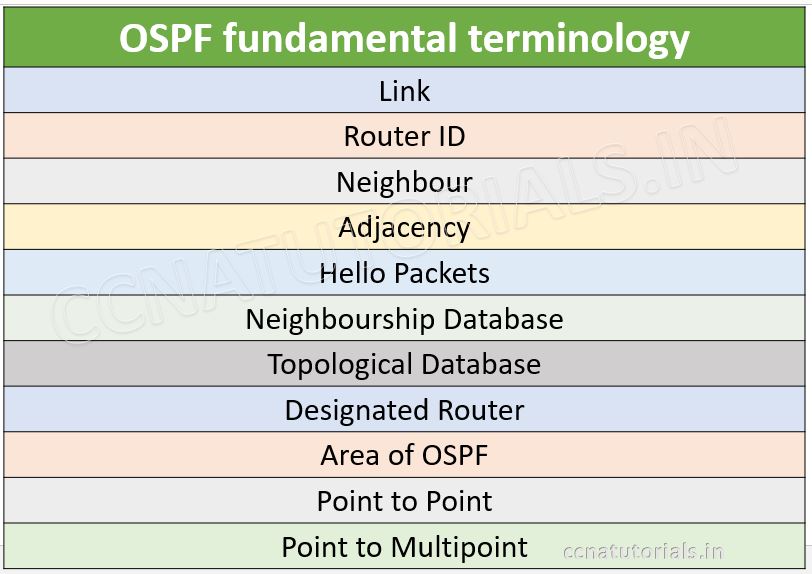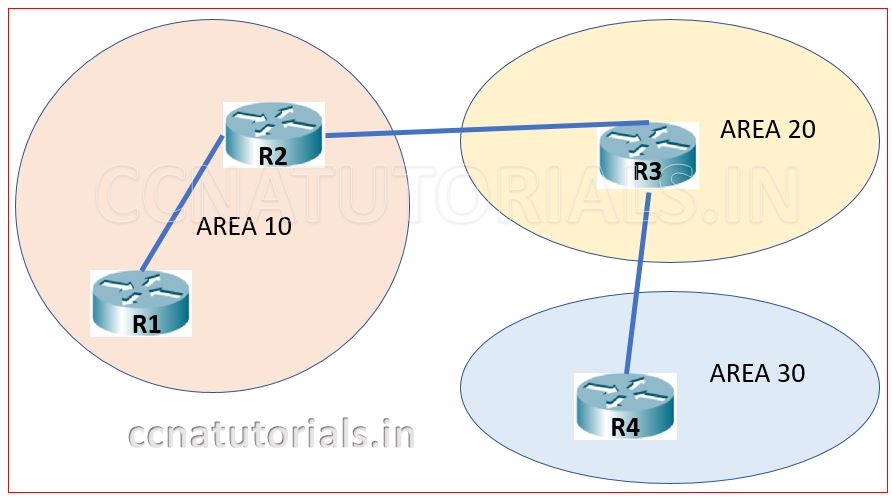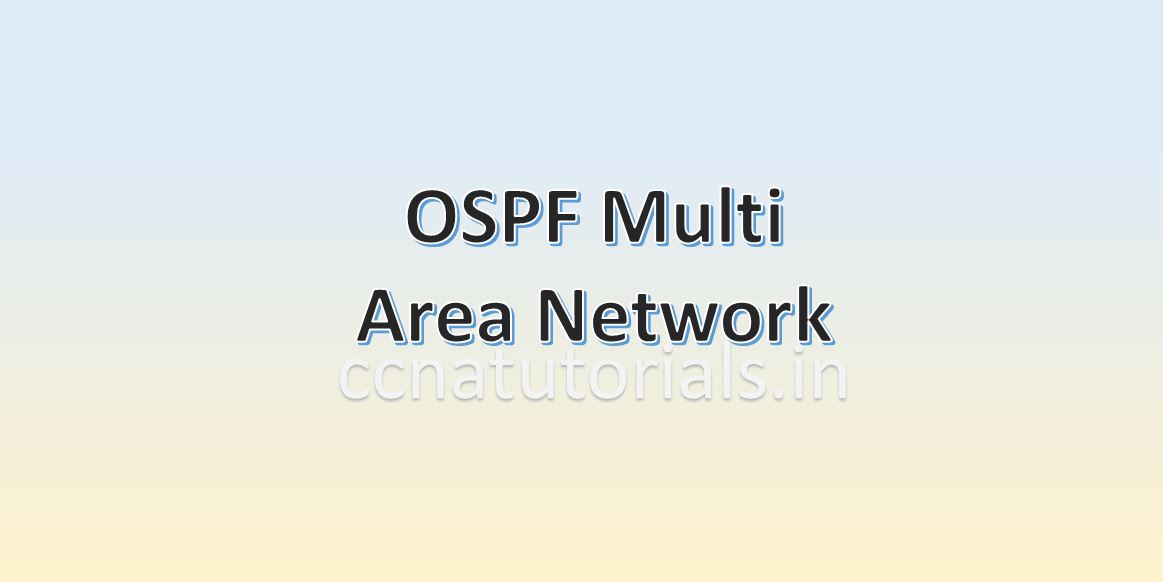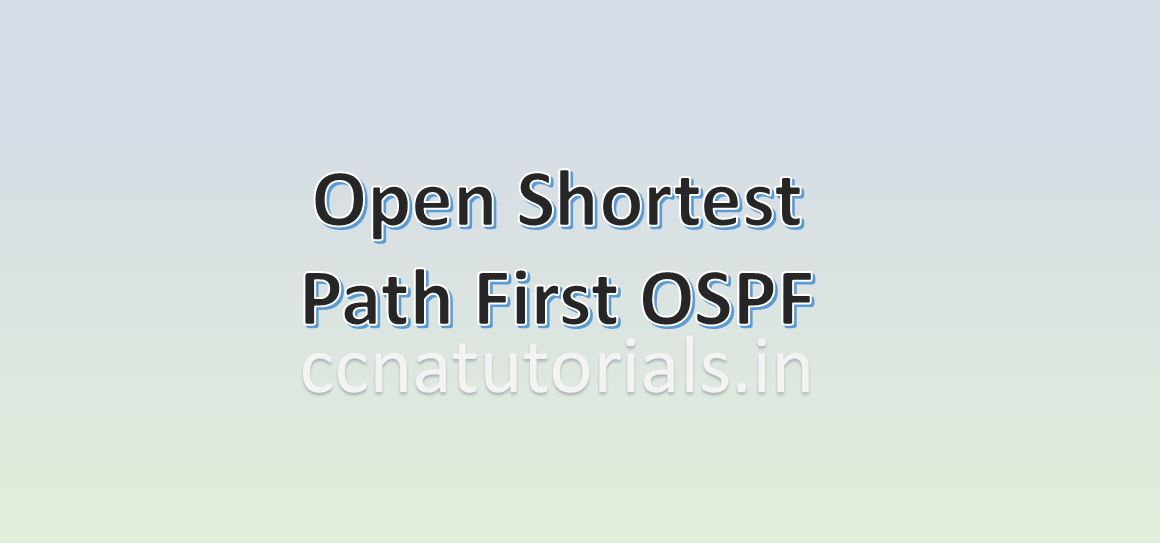Contents of this article
In this article I describe the OSPF fundamental terminology. Routing protocols helps router to build and maintain the routing table in routers. Routing protocols are one important part of default routing in router. Routing protocols inform the router about the networks connected at each interface. Routing protocols doesn’t carry or push the data packets in any way. Any change in the network required to be update in the routing tables of all routers. This task is carried out by the routing protocols. Routing protocols help the routers to select the best path to exit the data packets.
Example of routing protocols are RIP, RIPv2, IGRP, OSPF etc. Routing protocols further divided into distance vector, link state and hybrid protocols. These all routing protocols update the routing table of all routers in the network. You can see the routing protocols by “show ip route” command in privilege command mode of router. Routing protocols are not responsible for data packet flow in any way. Routing protocols spread the information of network hierarchy to all routers.
OSPF fundamental terminology explained
OSPF is acronym of Open Shortest Path First protocol. OSPF is an open standard routing protocol which provides the best and short path for data flow in network. The OSPF is a link state protocol. OSPF works on updates received from nearby networking devices like routers. OSPF is one of the interior Gateway Protocol. Before going to OSPF fundamental terminology remind some common properties of OSPF protocol
Some common Properties of OSPF protocol
OSPF function at layer 3 of OSI which is known as network layer. Routing devices works on network layer like router. OSPF uses port number 89 for routing. The Administrative Distance AD is by default 110. OSPF use 224.0.0.5 IP address for multicast and 224.0.0.6 for updates. There are some predefined terms which make OSPF working. OSPF supports both IPv4 and IPv6. These terms are known as OSPF fundamental terminology. It is necessary to understand these terms for CCNA exam.

Link term
Link is a term used in OSPF fundamental terminology. The Link refers to interface of router or switch. When an interface configured for working with OSPF protocol, it is known as Link. The state of a link may be up or down. Up means the link is in service and down means the interface is out of service. IP address can be assigned to a link to use for OSPF.
Router ID
Router ID term is also a part of OSPF fundamental terminology. Every router assigned an IP address for it’s identity. This IP address is known as Router ID. Router ID is mostly the highest IP address of all IP addresses assigned to active physical interface of router.
Neighbour
Next hop router is known as Neighbour. When two router connected with each other via a common media both are known as neighbour of each other.
Adjacency term in OSPF fundamental terminology
The Adjacency is a type of relationship between two routers working on OSPF. Adjacency allow the routers to update the route from one router to another router. OSPF directly shares routes only with the neighbours which already established the adjacency.
Hello packets
The OSPF Hello packets provides the state of a router in the network. The OSPF hello packets are responsible to maintain the relationships between the routers. Hello packets are send on 224.0.0.5 IP address.
Neighbourship Database
The Neighbourship database contains the information of the routers from which the hello packets received. Multiple information of routers saved in neighbourship database like router ID, link state etc.
Topological Database
The Topological database store the information of link state of all routers belongs to a particular area. The information of topology of network stored in this database. When any router added to network or removed from the network, the topological database updated accordingly. Link state advertisement packets used to maintain the topological database in a router.
Designated Router
Designated router selected when OSPF routers connected with the same multi access network. Designated router decide the path of data from source to destination in same multi access network. Designated router ensures that the topology database of all routers should be updated. A backup designated router also used in the network which take over the place of designated router in case of failure of it.
Area of OSPF
An OSPF area is a number which defines the router belongs to a particular group. The network divided in different Areas. OSPF Area defined by a number assigned by the administrator.

The routers belongs to same area shares the same Area ID. The interface of router belongs to a fix area. It is possible a router belongs to multiple area but the interface remains in a single area. Area ID is defined when OSPF configured in the router.
Point to Point
Point to Point term refer to a network topology which consisting a direct connection between two routers. Point to Point communication provides a single communication path between two routers. The point to point connection may be physical or logical connection.
Point to Multipoint
Point to multipoint term refer to a network topology which consist multiple connections between single interface on a router and multiple destination routers. All of the interfaces on all routers share the point to multipoint connection of the same network.
All above terms required to understand for CCNA Exam. I hope you found this article helpful related to the OSPF fundamental terminology. For any query or suggestion you may drop a comment below or contact us. Your suggestions are always welcome by us.





Appreciating the persistence you put into your site and detailed information you offer.
It’s great to come across a blog every once in a while that isn’t the same unwanted rehashed material.
Fantastic read! I’ve saved your site and I’m including your
RSS feeds to my Google account.
Like!! I blog frequently and I really thank you for your content. The article has truly peaked my interest.
But wanna input that you have a very nice web site, I love the style it really stands out.
LSCS Medical Assistant Program prepares students as multi-skilled
allied health professionals, who, as members of the health
care delivery system, perform clinical and administrative procedures.
is it legal to order viagra online – llviabest.com – viagra online in usa
Common causes of paresthesia include:Many people experience pins and needles at the end of
a long day. reputable viagra online pharmacy (llviabest.com) reputable viagra online pharmacy